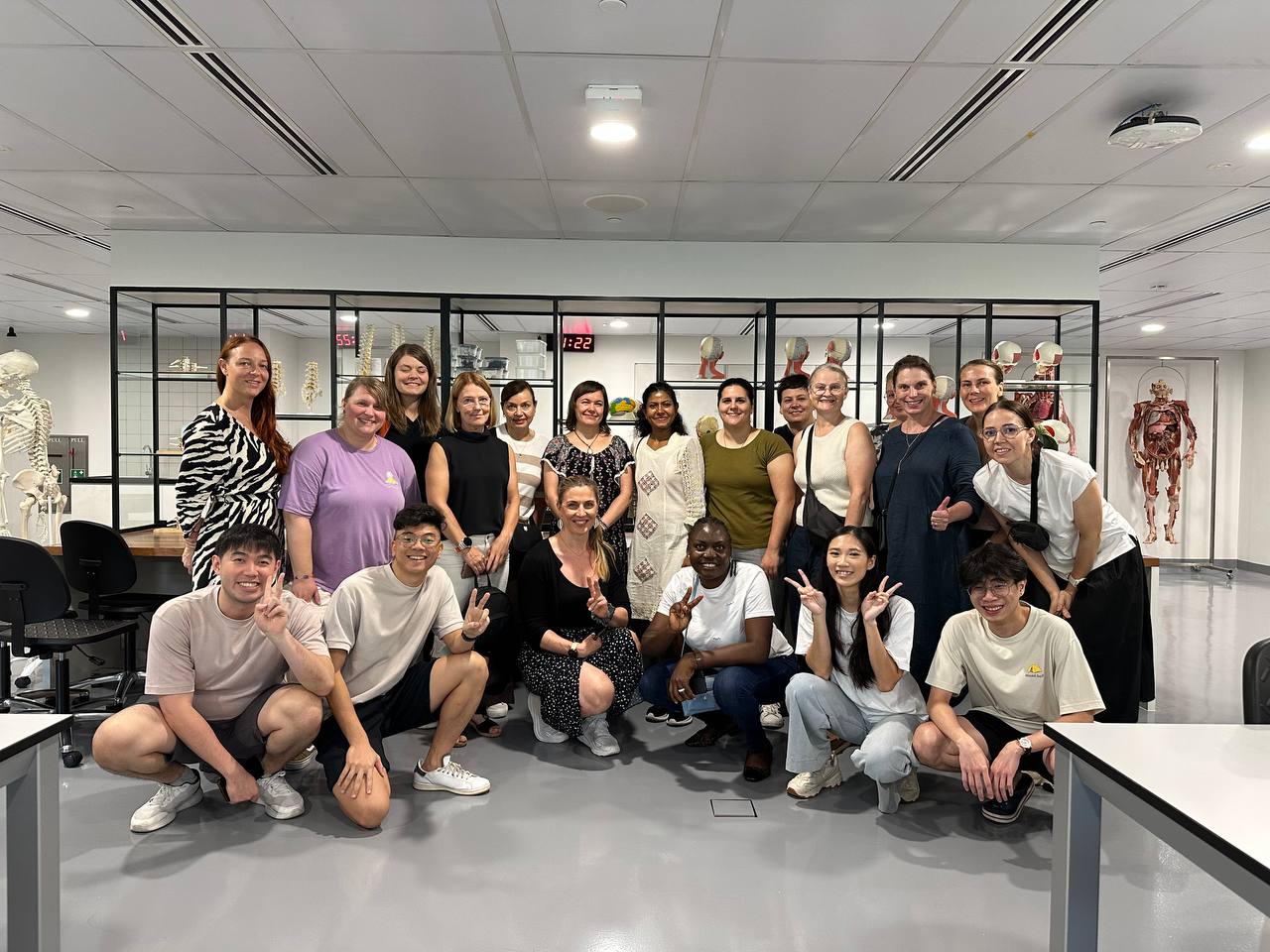
Savonia Article Pro: Singapore – A Nation of Healthy People: What Finland Can Learn
Savonia Article Pro is a collection of multidisciplinary Savonia expertise on various topics.
This work is licensed under CC BY-SA 4.0
Introduction
Finland and Singapore (Picture 1) may be worlds apart geographically, yet they share remarkably similar health challenges. Both countries face aging populations, rising rates of chronic diseases, and record-low birth rates — all of which threaten the long-term sustainability of their healthcare systems (OECD, 2024; THL, 2024).

Despite these shared challenges, Singapore stands out for its efficiency: in 2024, it spent only 4.9% of GDP on healthcare, compared to Finland’s 8.6% (World Bank, 2024). How does Singapore manage to keep its citizens healthy while maintaining lower costs?
This article is part of a blog series related to the Global and Sustainable Health (GOSH) project, funded by the Finnish National Agency for Education (TFK). The project has involved collaboration between four universities of applied sciences: Turku UAS, JAMK, Singapore Institute of Technology: University of Applied Sciences, and Savonia UAS. Together, they have developed a 5-credit study module titled Global and Sustainable Health. The course explores its main themes from the perspective of rehabilitation. It included an intensive week, which in autumn 2025 was held in Singapore. The blog articles describe students’ learning experiences, perspectives, and reflections during the intensive week.
As part of an intensive week in the Global and Sustainable Health course at the Singapore Institute of Technology, we had the opportunity to explore how Singapore promotes public health through practical, community-based initiatives. What we found was a forward-looking, technology-driven model that places prevention at the very heart of healthcare (Health Promotion Board, 2024).
Healthier SG – Making Prevention a National Priority
Launched in 2023, Healthier SG marks a major shift in Singapore’s healthcare philosophy — from treating illness to preventing it (Ministry of Health Singapore, 2023). The program targets adults aged 40 and above and encourages long-term well-being through prevention, self-care, and early intervention. At the core of Healthier SG lies the family doctor model. Every citizen register with a primary care physician who knows their medical history and supports their ongoing health. Together, they develop a personalized Health Plan that includes physical activity, nutrition, weight management, screenings, vaccinations, and medication monitoring where needed (The Lancet Regional Health – Western Pacific, 2023). Digital tools are central to this transformation. The Healthy 365 app allows users to track daily activity, food choices, and participation in community programs like the National Steps Challenge. Healthy behaviors earn Health points, which can be redeemed for groceries, public transport, gym memberships, or insurance discounts. The app also provides reminders, health tips, and motivation to stay active — turning healthy living into a rewarding daily habit (Health Promotion Board, 2024).
By 2024, over one million Singaporeans had joined the program, leading to measurable increases in physical activity, preventive screenings, and healthier eating habits (Ministry of Health Singapore, 2024). The results are striking individuals enjoy better health and immediate financial rewards, while society benefits from lower healthcare costs. By empowering citizens to take charge of their own health, Singapore is building a sustainable, prevention-focused healthcare system — one that offers valuable lessons for Finland and beyond (Health Promotion Board, 2024; The Lancet Regional Health – Western Pacific, 2023).
Technology and Responsibility: The Future of Preventive Care
Singapore’s healthcare system combines universal access with a financing model that promotes personal responsibility (World Bank, 2024). It uses advanced analytics and AI to predict health risks and guide patients to the right care early on. Hospitals leverage national health data for early intervention, while citizens can monitor their own health via digital platforms (The Lancet Regional Health – Western Pacific, 2023). The government has made major investments in AI, genomics, and digital infrastructure, ensuring these innovations respect data privacy, ethics, and interoperability (Ministry of Health Singapore, 2024). The result is a proactive, human-centered system that bridges technology and trust.
Finland, too, is aiming to shift toward proactive healthcare, with the Ministry of Social Affairs and Health encouraging well-being areas to identify problems early and guide citizens to care (Sosiaali- ja terveysministeriö, 2024a). In theory, these regions could use AI and patient data to detect early signs of illness or spot gaps in care — but it remains unclear whether current legislation will allow such use of data. Moreover, today’s healthcare financing models still favor reactive treatment and diagnoses, making it difficult to prioritize prevention (Sosiaali- ja terveysministeriö, 2024b; Valtioneuvosto, 2023).
A Lesson in Agility and Integration
Singapore’s agile, systematic approach — combining personalized health plans, digital tools, and community engagement — offers a clear blueprint for Finland. A similar model could work well even in Finland’s sparsely populated regions, where access and coordination are key challenges (OECD, 2024). The family doctor model, supported by digital incentives for healthy behavior, could be a natural next step toward more preventive, person-centered healthcare in Finland (THL, 2024; Sosiaali- ja terveysministeriö, 2024a). Singapore shows that when prevention, technology, and personal responsibility align, a healthier society is not just an aspiration — it’s an achievable reality (Health Promotion Board, 2024). In summary, it can be said that the trip broadened our minds and provided us with many new learning experiences (Picture 2).

Authors:
Miia Klemetti physiotherapy students, Savonia University of Applied Sciences
Marja Äijö PT, PhD, Principal lecturer of Gerontology and Rehabilitation, Savonia University of Applied Sciences
References:
Health Promotion Board. 2024. Annual report 2023–2024. Government of Singapore. https://www.hpb.gov.sg/docs/default-source/pdf/hpb-2023_2024-annual-report.pdf
Ministry of Health Singapore. 2023. What is Healthier SG? Healthier SG Official Website. https://www.healthiersg.gov.sg/about/what-is-healthier-sg/
Ministry of Health Singapore. 2024. Healthy living – Singapore. https://www.moh.gov.sg/staying-healthy/healthy-living
The Lancet Regional Health – Western Pacific. 2023. Healthier SG: Singapore’s multi-year strategy to shift the focus from illness to health. The Lancet Regional Health – Western Pacific, 36, 100786. https://doi.org/10.1016/j.lanwpc.2023.100786
World Bank. 2024. Current health expenditure (% of GDP) – Singapore. World Development Indicators. https://data.worldbank.org/indicator/SH.XPD.CHEX.GD.ZS?locations=SG
Valtioneuvosto. 2023. Pääministeri Petteri Orpon hallituksen ohjelma 2023. Valtioneuvoston kanslia. https://valtioneuvosto.fi/hallitusohjelma
Sosiaali- ja terveysministeriö. 2024a. Hyvinvointialueet ja ennakoiva terveydenhuolto. Sosiaali- ja terveysministeriö. https://stm.fi/hyvinvointialueet
Sosiaali- ja terveysministeriö. 2024b. Sote-uudistus: Kohti ennaltaehkäisevää ja kestävää hyvinvointia. Sosiaali- ja terveysministeriö. https://stm.fi/sote-uudistus
Terveyden ja hyvinvoinnin laitos (THL). 2024. Ennaltaehkäisevä terveydenhuolto ja väestön hyvinvointi Suomessa. https://thl.fi
Organisation for Economic Co-operation and Development (OECD). 2024. Health at a Glance 2024: OECD indicators.OECD Publishing. https://doi.org/10.1787/health_glance-2024-en